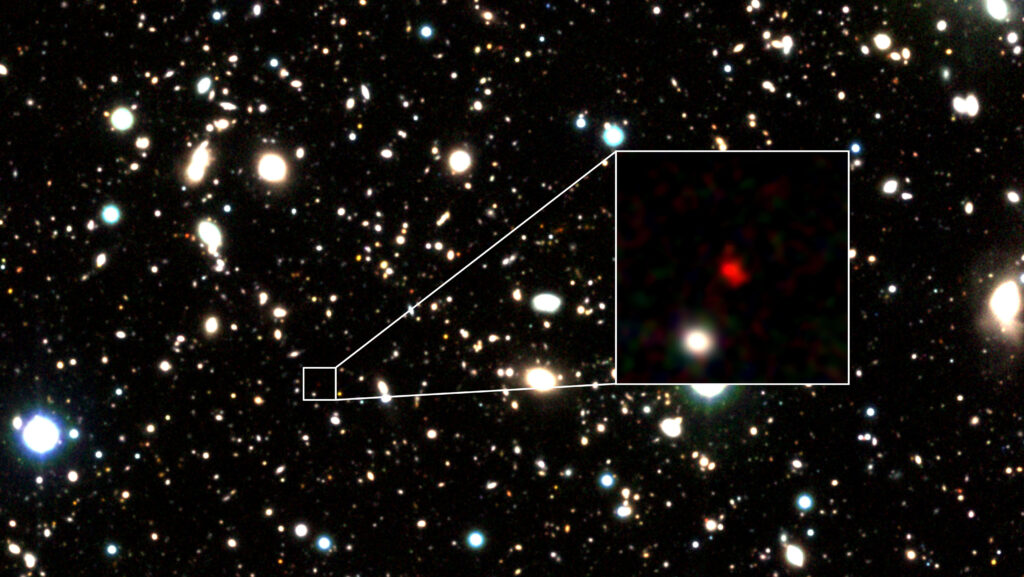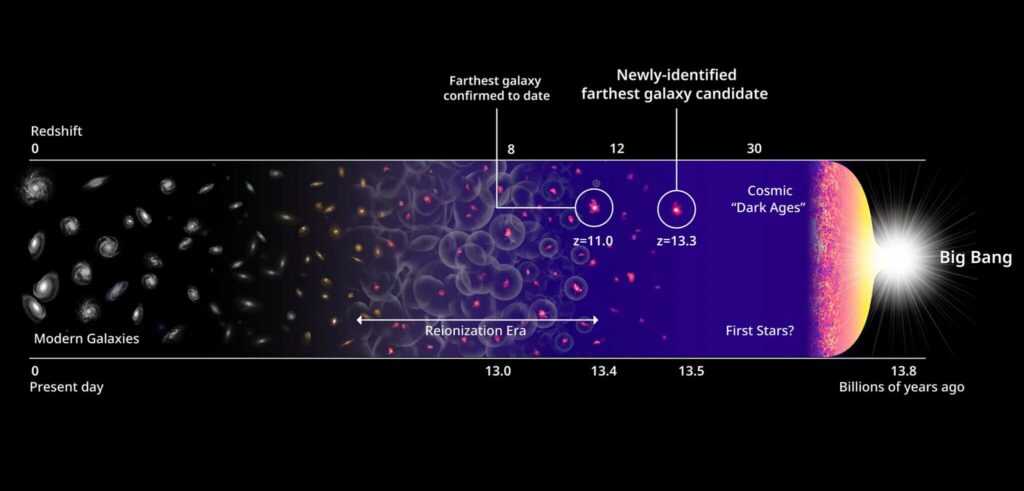An international team of researchers has announced the discovery of an object that may be the most distant galaxy in the Universe. We see it as it was 13.5 billion years ago — that is, just 300 million years after the Big Bang.

The newly discovered galaxy received the designation HD1. It glows extremely brightly in the ultraviolet range. Researchers have two main hypotheses explaining this. According to one of them, HD1 experienced an outbreak of star formation. But it’s not that simple here. When astronomers calculated how many stars it had to produce to be so bright, they got a figure of over a hundred per year. This is at least ten times higher than expected for galaxies of that era.
Therefore, scientists have suggested that HD1 formed stars that could no longer exist in our time. We are talking about the so-called stars of population III. These are the very first luminaries in the Universe, which were much more massive and brighter than modern ones. They had a very large mass and, as a result, a very short life span. So far, astronomers have not yet been able to observe the stars of population III “live”.
According to another version, there was a supermassive black hole in the center of HD1, whose mass was 100 million times greater than the solar one and which was very actively absorbing matter. If confirmed, it will become the earliest known supermassive black hole.

Scientists hope to return to HD1 soon and make observations using the James Webb telescope, which will be able to provide additional details about this galaxy and clarify the distance to it. Existing estimates suggest that the light emitted by it took 13.5 billion years to reach the Earth. But if we take into account the factor of the expansion of the Universe, then the real distance to HD1 is 33.4 billion light years.
Recall that astronomers recently photographed the most distant star in the Universe.
According to https://news.harvard.edu
Follow us on Twitter to get the most interesting space news in time
https://twitter.com/ust_magazine
